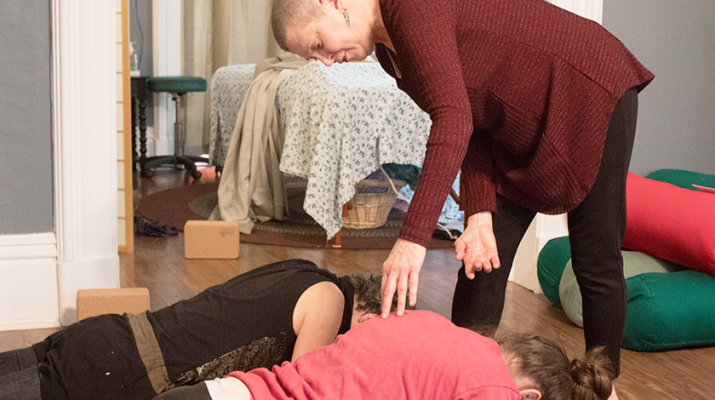Specialized approach works to change bad muscle habits that cause pain, damage to bodies
By Maria Pericozzi
Margaret Miner, licensed massage therapist in Oswego, is one of only three restorative exercise specialists who are presently teaching in the Central New York area.
Two years ago, Miner discovered nutritious movement training, which is a program that begins to change “bad muscle habits” that cause pain and damage to bodies, as you can see on their homepage. It does this through learning alignment principles and using specific movements.
Miner became a nutritious movement-certified restorative exercise specialist through the Nutritious Movement Institute in Sequim, Wash.
“I first discovered it after I was having issues with my knee and foot, making it very difficult to hike,” said Miner. “For me, it sounded like a program to make myself better, and it did work.”
Miner said she got thinking about her massage clients who have issues and mystery pains, and she decided to become an instructor to help them.
“For me, it is one more thing to add to my services,” Miner said. “Some people just want massages, while other people ask, ‘What can I do to help myself?’”
Miner has lived in Oswego her entire life. She has been a licensed massage therapist for 18 years, working with Strands & Essence Salon and teaching classes at North Coast Yoga.
She opened her own studio in February, located at 22 W. Oneida St., Oswego.
At her studio, she offers many different massages in half-hour and one-hour sessions, as well as one-hour sessions of restorative movement.
Private restorative movement sessions are $75, and group sessions are $15 per person.
Katy Bowman, the woman who launched the nutritious movement, is a biomechanist who looked at movement from a biomechanical standpoint, studying the external and internal movements on the body.
“It’s not just if you can stretch and how far you can stretch,” Miner said. “It is often how you get into it.”
During class, Miner breaks down how students move, and tries to develop strength and flexibility in muscles that have not been used, improving quality of movement.
“Katy likes to describe it as, ‘Movement matters and a lot of our conditions these days are diseases of affluence,’” Miner said. “In our culture, we don’t move as much as we used to. Back in the day when we farmed, we walked everywhere. You got a variety of movements in there that were nutritious to muscle health. Now we sit there, drive, and keyboard.”
Miner strives to encourage her students to practice the corrective moves she teaches.
“You’re working movement into your life by changing how easy or how hard you make it to do things,” Miner said. “We like doing things the easy way, which is great, but not so great for our bodies.”
Miner’s students have reacted well to restorative movement and have been supportive.
“I try to encourage them, because you can always modify,” Miner said. “I can make it challenging for people who find it easy. For people who are struggling, we can make changes to make it easy.”

